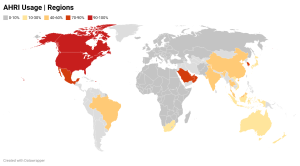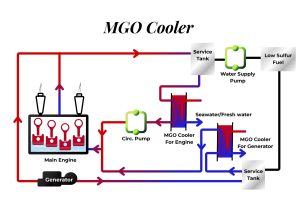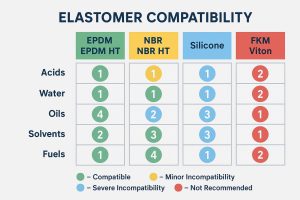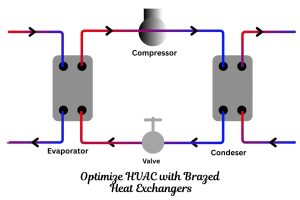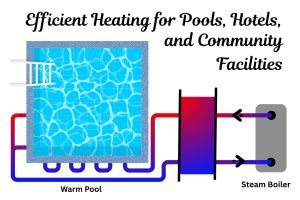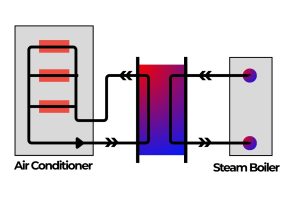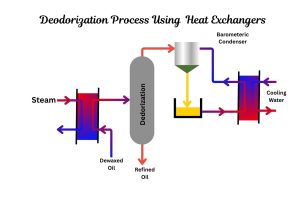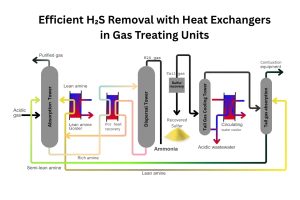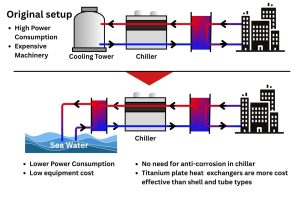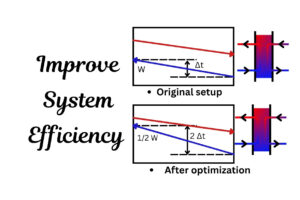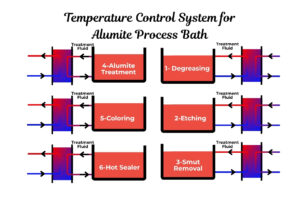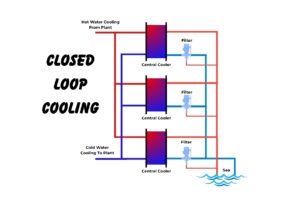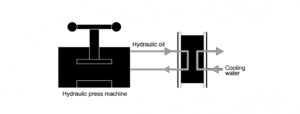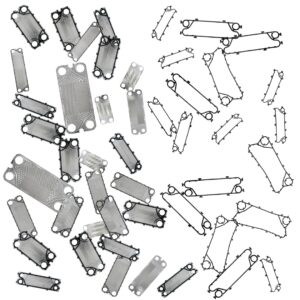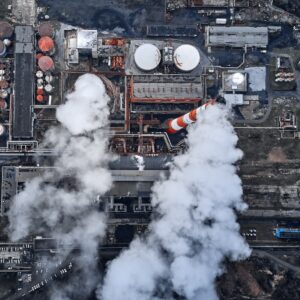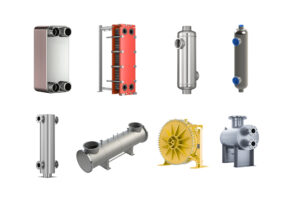Riding the Wave of Innovation: Top Heat Exchanger Trends Shaping 2025 and Beyond
In the world of industrial processing, efficient thermal management isn’t just a goal; it’s the backbone of productivity, safety, and profitability. Heat exchangers, the unsung heroes of countless applications, are at the center of this universe. From their early conception in the late 19th century as simple tube-in-shell devices, they have evolved into sophisticated systems critical to modern industry.
Today, the heat exchanger market is experiencing a seismic shift. Driven by a global push for sustainability, unprecedented technological advancements, and the need for smarter, more resilient systems, the industry is innovating faster than ever. The global market is projected to surge past USD 30 billion by the early 2030s, a testament to its critical importance.
So, what are the key trends propelling this evolution? Let’s dive into the innovations shaping the future of heat transfer.
What’s Driving the Global Demand for Better Heat Exchangers?
The primary catalyst for innovation is the urgent, worldwide focus on energy efficiency and decarbonization. As industries from HVAC and power generation to food production and manufacturing face stricter environmental regulations and rising energy costs, the demand for high-performance heat exchangers has skyrocketed. These are no longer just components; they are strategic assets for reducing a company’s carbon footprint. The ability to recover and reuse waste heat, for example, is a powerful tool for sustainability, and modern exchangers are designed to do this better than ever before.
How Are Smarter Designs Improving Performance?
Gone are the days of one-size-fits-all solutions. Today’s trend is toward specialized, compact, and highly efficient designs that deliver maximum performance in a minimal footprint.
- Microchannel Heat Exchangers (MCHE): These are rapidly gaining popularity, especially in the HVAC and automotive sectors. By using micro-scale channels, they enhance heat transfer with incredible efficiency, requiring less refrigerant and taking up less space.
- Plate Heat Exchangers (PHEs): The versatility of gasketed plate heat exchangers (GPHEs) makes them a cornerstone of modern industry. Their modular design allows for easy maintenance, cleaning, and scalability. Whether you need to adjust capacity or handle different fluid types, a well-designed plate heat exchanger offers unparalleled flexibility.
- Welded and Printed Circuit Designs: For the most extreme environments, such as high-pressure and high-temperature applications in the oil & gas or chemical industries, fully welded and printed circuit heat exchangers (PCHEs) provide robust, leak-proof performance.
Choosing the right design is critical for optimizing your process. For a detailed comparison and to find the ideal unit for your specific application, a comprehensive GPHE Selection tool can be an invaluable resource.
What Role Do Advanced Materials Play in Modern Exchangers?
The performance of a heat exchanger is only as good as the materials it’s made from. The latest trend involves the use of advanced alloys and coatings to extend lifespan and handle increasingly aggressive or high-temperature fluids. While standard 304 and 316 stainless steel remain popular, specialized materials are becoming essential in demanding sectors.
At Heating Formula, we supply plates and parts in a wide variety of advanced materials to meet these challenges head-on. This includes:
- Titanium: For exceptional corrosion resistance, especially with seawater or chlorides.
- C-276 Hastelloy: For superior performance with acidic and corrosive media.
- 254 SMO: A high-alloy austenitic stainless steel for environments rich in chlorides.
Investing in the right materials from the start prevents costly downtime and ensures reliability. When it’s time for maintenance or an upgrade, having access to high-quality GPHE Spare Parts is crucial. We pride ourselves on supplying a full range of plates and gaskets (including EPDM, NBR, and Viton) that are fully compatible with leading OEM brands like Alfa Laval, Sondex, APV SPX, Funke, Schmidt, Vicarb, Gea, and Tranter.
Plate Materials vs. Compatible Fluids and Standard Thicknesses
| Plate Material | Compatible Media | Available Thickness (mm) |
|---|---|---|
| 304 Stainless Steel (SS) | Pure water, food-grade oils, ethanol | 0.4, 0.5, 0.6 |
| 316 Stainless Steel (SS) | Water, edible oils, ethanol, carbonic acid, low-temp 20% sulfuric acid (chloride-free) | 0.4, 0.5, 0.6 |
| 254 SMO Stainless Steel | Low-temp 20% sulfuric acid (chloride-free), inorganic acids | 0.6 |
| Titanium | Seawater, chloride-containing solutions (up to 130°C) | 0.5, 0.6 |
| Titanium-Palladium (Ti-0.2Pd) | 70% nitric acid, hydrochloric acid with copper and iron ions | 0.5, 0.6 |
| Hastelloy C-276 | 98% sulfuric acid, nitric acid, 40% hydrochloric acid, 50% phosphoric acid | 0.6 |
| Nickel 200/201 | High-concentration alkaline solutions (50%–70%) | 0.6 |
| Graphite | Highly corrosive fluids and aggressive chemical media | 0.6 |
Sealing Gasket Materials: Temperature Ratings and Compatible Media
| Gasket Material | Temperature Range (°C) | Suitable Media Types |
|---|---|---|
| EPDM (Ethylene Propylene Diene Monomer) | -25 to 140°C | Water, aqueous solutions, mild acids, mild bases |
| EPDM HT (High-Temperature EPDM) | -20 to 150°C | Hot water, aqueous solutions, diluted acids and bases |
| NBR (Nitrile Rubber) | -30 to 100°C | Water, fats, vegetable oils, mineral oils, ethanol, glycol, aqueous solutions |
| HNBR (High-Temp Nitrile Rubber) | -30 to 120°C | Water, aqueous solutions, fats, vegetable oils, mineral oils, ethanol, glycol |
| FKM/Viton-B (Fluoro Rubber – Type B) | -15 to 150°C | Strong inorganic acids (oxidizing), alkalis, salts, fuels, petroleum products, solvents |
| FKM/Viton-G (Fluoro Rubber – Type G) | -15 to 180°C | Steam, hot water, high-temperature mineral oils, aggressive solvents |
| CR (Chloroprene Rubber / Neoprene) | -30 to 120°C | Ammonia, fluorinated refrigerants |
Applications and Material Guidelines
| Type | Description | Common Applications |
|---|---|---|
| Water/Water | Most common type; water is either cooled or heated using another water stream from a lake, river, sea, or cooling tower. | – Swimming pool heating – HVAC systems – Cooling water in industrial plants – Power industry – central cooling – Chemical industry – process cooling |
| Water/Oil | Used in industries to cool oil using water. The cooled water can be repurposed, e.g., for domestic hot water. Special plate materials may be needed for synthetic oils. | – Hydraulic oil cooling – Quench oil cooling – Motor oil cooling in test rigs – Applications with oil concentrations below 5% |
| Water/Glycol | Used where freezing is a concern. Glycol lowers the freezing point of water but requires more surface area due to lower heat capacity. | – Refrigerant/brine loops in heat pumps – Cooling in industrial processes – Solar heating systems – Air conditioning chillers |
| Chloride Content (ppm) | Recommended Plate Material |
|---|---|
| 10 ppm | 304, 316 |
| 25 ppm | 304, 316 |
| 50 ppm | 316 |
| 80 ppm | 316 |
| 150 ppm | Titanium (Ti) |
| 300 ppm | Titanium (Ti) |
How is Digitalization Transforming Heat Exchanger Technology?
The digital revolution has officially arrived in the world of thermal dynamics. “Smart” technology is no longer a buzzword; it’s a reality that is enhancing efficiency and reliability.
- IoT and Predictive Maintenance: By embedding sensors into heat exchangers, operators can monitor performance in real-time. This data, often powered by AI algorithms, can predict when maintenance is needed, preventing unexpected failures and costly shutdowns.
- CFD and Simulation: Before a single piece of metal is cut, engineers use Computational Fluid Dynamics (CFD) to model and simulate the flow and thermal performance of a heat exchanger. This allows for the optimization of complex geometries, ensuring maximum efficiency and effectiveness from day one.
For engineers looking to make quick and accurate initial assessments, our Heat Exchanger Calculator is an excellent starting point for understanding your thermal duty requirements.
Conclusion: Your Partner for a More Efficient Future
The future of heat exchanger technology is clear: it is smarter, more sustainable, and built with advanced materials to meet the demands of modern industry. From the booming HVAC and food & beverage sectors to the stalwart power generation and manufacturing industries, these trends are paving the way for more efficient and profitable operations.
At Heating Formula, we are at the forefront of this evolution. As a premier Turkish manufacturer, we provide not only state-of-the-art Gasketed Plate Heat Exchangers and Shell & Tube exchangers but also a comprehensive inventory of compatible spare parts for all major brands. We are committed to delivering quality and innovation to help our partners thrive.
Frequently Asked Questions (FAQ)
1. What is the main benefit of a microchannel heat exchanger (MCHE)? The primary benefit of an MCHE is its high thermal efficiency within a very compact and lightweight design. This allows for reduced refrigerant charge and a smaller footprint, making it ideal for modern HVAC and automotive applications.
2. How do I choose between titanium and stainless steel plates for my heat exchanger? The choice depends on your application’s fluid and temperature. Stainless steel (316L) is excellent for general-purpose applications like water, oil, or food products. Titanium is superior for corrosive fluids, such as saltwater, brine, or aggressive chemicals, as it offers much higher resistance to corrosion and pitting.
3. What is the lifespan of a plate heat exchanger gasket? A gasket’s lifespan depends heavily on the operating temperature, pressure, and fluid type. Generally, EPDM and NBR gaskets can last 5-10 years under ideal conditions. However, regular inspection is key. If gaskets become hard, brittle, or show signs of leakage, they should be replaced immediately. You can find a wide range of replacement gaskets in our GPHE Spare Parts section.
4. How can a heat exchanger improve my facility’s energy efficiency? A heat exchanger improves efficiency by recovering waste heat from an industrial process and transferring it to another fluid that needs heating. This reduces the need for additional energy input (like from a boiler or electric heater), which lowers fuel consumption, decreases operational costs, and shrinks your carbon footprint.
5. Can I get spare parts for my existing heat exchanger, even if it’s not a Heating Formula model? Yes, absolutely. Heating Formula supplies a vast range of high-quality spare plates and gaskets that are 100% compatible with major OEM brands, including Alfa Laval, Sondex, Gea, Tranter, and many others. This allows you to source reliable parts quickly and cost-effectively.
Sources
- Heat Exchanger Market Size & Share Analysis – Growth Trends & Forecasts (2024 – 2029). Mordor Intelligence.
https://www.mordorintelligence.com/industry-reports/heat-exchanger-market - Heat Exchanger Market Size, Share, Trends & Growth Report, 2034. Precedence Research.
https://www.precedenceresearch.com/heat-exchanger-market - Top 6 Heat Exchanger Technology Trends For 2024. North Slope Chillers.
https://www.northslopechillers.com/blog/heat-exchanger-technology-trends/ - What’s new in heat exchangers. Chemical Processing.
https://www.chemicalprocessing.com/material-handling/fluid-handling/article/11276239/whats-new-in-heat-exchangers


